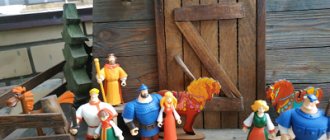Stones. Presentation for a lesson on the world around us. - presentation
Flint is often found in nature. It itself comes in different colors - brown, yellow, gray and even black. There are stones with patterns. The flint looks as if it has been rubbed with wax. This stone breaks quite easily into sharp fragments. Therefore, primitive people made their tools of labor and hunting from it - axes, scrapers, knives, arrowheads and spears. Flint was used to strike sparks to start a fire.
Pumice is a light, porous stone, similar to a sponge. It doesn't sink in water. This stone is formed during volcanic eruptions from lava foam saturated with gas bubbles. This means that pumice is fossilized lava foam. Many people can get acquainted with it in the bathroom - pieces of this stone are used for skin care.
Sandstone is a stone consisting of cemented grains of sand. It is often used as a building material.
Rock salt is the salt we add to our food. But only the salt on our table is ground into powder, and in natural underground deposits it occurs in the form of stone. Rock salt crystals are very beautiful. Numerous crystals can be easily found in a pack of coarse table salt. Looking at these crystals, imagine an underground city - a palace, where everything is made of rock salt. There is such an amazing underground museum in Poland.
Granite comes in gray, pink, and red colors. It can often be seen in cities: the walls of some buildings are lined with granite, river embankments are built from it, and pedestals for monuments are made from it. Granite is a rock consisting of grains of several minerals. These are mainly feldspar, quartz and mica. Colored grains are feldspar, translucent, sparkling grains are quartz, black grains are mica. “Grain” in Latin is “granum”. From this word the name “granite” appeared.
Peat is not difficult to recognize: the remains of the plants from which it was formed are clearly visible in it. The main plant that forms peat is peat moss (sphagnum). In addition to it, other plants also fall into peat deposits. Peat, formed a long time ago, eventually caked, became denser and gradually turned into brown coal. The remains of individual plants are no longer visible in it. But this coal is not very dense and does not shine. It stains our hands with brown coal powder.
Limestone is usually a white or gray stone. It was formed from the remains of very tiny and larger marine organisms. The substance (mineral) from which it is composed is called calcite, from the Latin word “calque” - lime. Sometimes limestone contains impurities that give it a pink, yellowish or greenish color. Limestone is widely used in construction.
Malachite is one of the most famous stones. Do you remember P. Bazhov’s book “The Malachite Box”? In the Urals, where the events of this book take place, malachite began to be mined more than two hundred years ago. And they made not only magnificent boxes from it, but also vases, brooches, cufflinks and many other products. Malachite is a green mineral with a very beautiful pattern. The copper it contains gives it its green color.
Coral is a stone created by living beings. This is the skeleton of sea animals. There are white, orange, pink, red and black corals. They are used to make jewelry.






